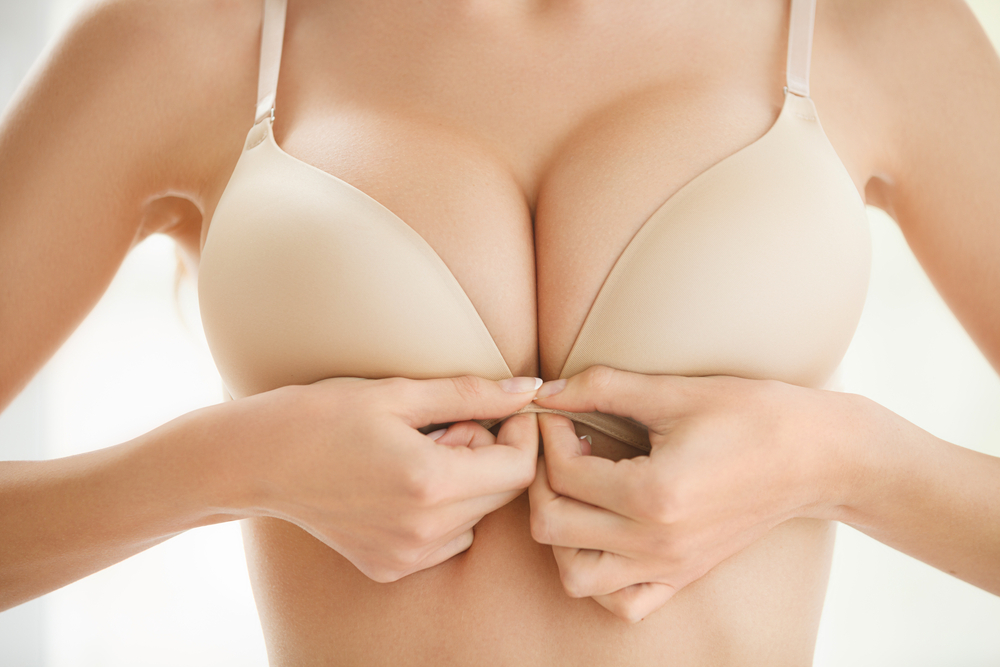You’re Invited to Our M Spa Bloom & Beautify Event! – Learn More
For many women, disproportionately large breasts can contribute to a number of physical and emotional concerns on a daily basis. Some of the most common issues experienced by females with overly large breasts include back and neck pain, breathing difficulties, excessive bra strap pressure, skin rashes, and even embarrassment or self-consciousness in certain personal or social situations. Fortunately, breast reduction surgery can often be an excellent option for individuals seeking to resolve these issues and improve their quality of life. Our plastic surgeons, Dr. Tiffany McCormack and Dr. Nichole Joslyn, are highly experienced in performing breast reduction. As a board-certified plastic surgeon, Dr. McCormack or Dr. Joslyn can each personalize treatment to remove excess breast tissue and reshape the entire breast to a more appealing and flattering size with natural-looking results.
There are several different incision options that can be utilized to perform breast reduction surgery, and the most effective approach will depend on the amount of tissue removal needed to achieve an ideal outcome. When a moderate degree of tissue removal is required, the incision pattern our plastic surgeons generally employ extends around the outer perimeter of the areola and continues vertically down the breast to the inframammary fold. This is known as the “lollipop” technique. For patients who have a significant quantity of excess tissue, the lollipop incision will be further extended horizontally along the inframammary crease, creating the shape of an inverted “T” and allowing for improved tissue excision/reshaping. During the consultation, your plastic surgeon will help patients select the most effective option for their needs and goals, always advising on which technique can deliver the best results with the least possible scarring.

To begin the breast reduction procedure, our surgeons will first employ the incisional technique that was agreed upon during the consultation. They will then carefully remove excess tissue and fat from the breasts, as well as excise any extra skin. Next, the remaining tissue is elevated and recontoured until the desired shape is achieved, and the nipple-areolar complexes may be resized/repositioned if needed. Lastly, the skin is gently pulled together and reattached using tiny surgical sutures.
Breast reduction on its own can usually be completed in about two hours, but surgery may take longer for individuals who elect to combine their treatment with another procedure as part of a Mommy Makeover. Performed on an outpatient basis, patients are generally able to return home later the same day with the aid of a close friend or family member.
Following breast reduction surgery, there will likely be some bruising and/or swelling in the breasts, but these temporary symptoms should diminish gradually over time. Any pain or discomfort can usually be managed effectively with medication, and most women feel well enough to return to work and other non-strenuous daily routines after about two weeks. To help ensure optimal healing, all heavy lifting, physical sports, vigorous exercise, and other strenuous activities should be avoided for at least a few weeks.
Final results of the surgery are usually apparent after six months to a year, at which point all potential swelling will generally be resolved. Your plastic surgeon will monitor healing during several postoperative visits throughout the recovery period, and will be available to address questions or concerns that might arise at any point in time.

Our before and after gallery features breast reduction patients, some of which have combined breast surgery with another procedure such as liposuction or tummy tuck to obtain a complete Mommy Makeover. For additional information about how you can experience an amazing new you, contact Reno Tahoe Plastic Surgery today.
Breast reduction can provide several physical and emotional benefits for women who have overly large breasts. Based on your individual concerns and goals, this procedure can help:
Good candidates for breast reduction are generally troubled by one or more of the following issues related to excessively large breasts:
In addition, patients must be in good general health, be a non-smoker, and have realistic expectations for what can and cannot be achieved with breast reduction surgery.
Patients considering this procedure should be aware that breastfeeding may not be possible after the surgery due to alteration or removal of milk glands. That said, this is not always the case. For those who have yet to have kids or who are planning to have more children in the future, our plastic surgeons will do everything they can to help ensure breastfeeding is still a possibility following the procedure.
The breast reduction procedure does cause scarring, although care is taken to make sure that scars are placed where undergarments and clothing normally cover the breast. In addition, when postoperative care instructions are carefully followed throughout the healing and scar maturation process, the final appearance of any scarring tends to fade and become less conspicuous over time. In the end, the vast majority of individuals say the results of their treatment far overshadow any concerns they have with scarring.